
Product Placement: from Hollywood to Social Media
In the digital age, we are confronted with advertisements every day in different aspects of our life. While walking on the street posters and screens surround us that advertise products. While we drive the bus or a car, commercial breaks on the radio present to us the newest product on the market and the best prices. Likewise, the TV broadcasts commercials when we watch the news or our favorite program. The phone that we carry with us 24/7 is another main source that exposes us to marketing. Subconsciously, we take this information up and are influenced to accommodate our buying behavior. But at the end of the day, we are aware of these obvious ways of advertising. However, in some cases, our perception and level of awareness of branding in the entertainment industry differ. Thus, this analysis zooms in on surreptitious advertising.
This article provides an analysis of advertisements in the field of entertainment. Its focus will be on how Influencers make use of para-social relationships to manipulate their audience for advertisement on social media. Therefore, the development of advertisements in film to social media will be examined. Furthermore, the concept of para-social relationships will be elaborated on and applied to Influencer advertisement strategies.
The history of product placement
Product placement is a common tool of marketing in movies. This has a long history. Advertising brands in a subtle manner on television did not arise in the 21st century. Early examples of product placement can be found in the 1920s. One example is the short film ‘The Garage’ directed by Roscoe “Fatty” Arbuckle and Buster Keaton that broadcasts the Red Crown Gasoline’s logo (Figure 1).

Figure 1 Product placement in 1920's ‘The Garage’
The promotion of the brand within the movie was criticized by the newspaper ‘Harrison’s Report’ during that time (Hardy, 2017). Nevertheless, the negative journalistic uptake of product placement did not discourage the movie industry or brands, but the opposite occurred. With time, product placements in movies gained popularity. Nowadays, almost every movie has advertisements for brands and this can be explained by the advantages that come along with it.
Advantages of product placement
Firstly, product placement in movies increases the popularity of a certain brand. Nielsen Media Research has revealed that advertisements on television can raise brand awareness by 20% (Williams, Petrosky, Hernandez, & Page Jr, 2011). Furthermore, it triggers the audience’s desire for the shown products. This can be seen in the example of Reese’s Pieces advertisement in the famous movie ET. Only two weeks after the movie premiere, Reese’s profit increased by 65% (Hardy, 2017). Additionally, strategic product placement can construct an association of a product with a certain lifestyle. A prime example of this is the brand BMW in James Bond movies. The fact that the rich, fearless, and cool womanizer James Bond drives a BMW creates an association with the brand and the portrayed lifestyle. This again triggers the viewer’s consumption, according to the mentality ‘if I want to have this lifestyle, I need to buy this product’. Thus, advertisement in movies benefits the brand financially. The movies also profit from product placement since the brand’s payment for visibility contributes to financing the film.
Thus, product placements in movies offer new branding opportunities compared to traditional advertising like commercials in television breaks, magazines, posters, and so on. The significant difference is: product placement combined with entertainment is a subtle way of unconscious branding while a traditional commercial is recognizable as an advertisement.
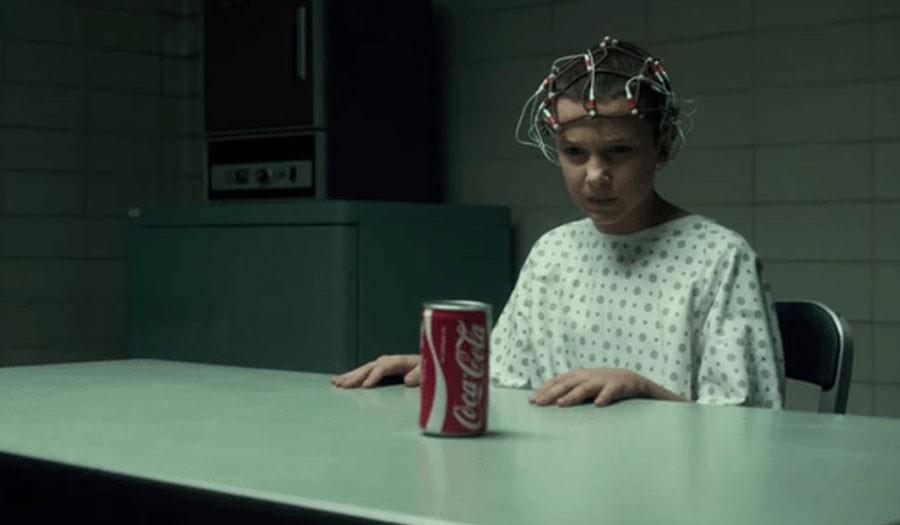
Figure 2 Coca Cola product placement in the show stranger things
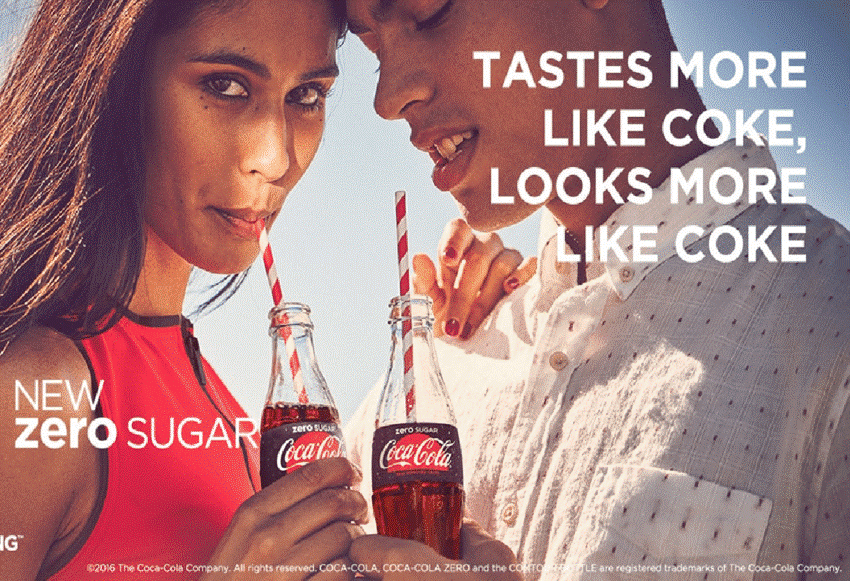
Figure 3 Coca Cola commercial poster
By examining the difference in Figures 2 and 3, it becomes evident that product placements in movies include a company’s product in the storyline. The goal is to achieve branding through visibility. However, traditional commercials evolve the content around the product to market it in the best light possible. While Figure 2 shows a subtle way of advertising that can easily be unnoticed which is why people refer to it as ‘camouflage advertisement’, Figure 3 shows a form of advertisement that is clearly identifiable as such through its format; a poster that centralizes models drinking the product “new zero sugar” Coca Cola framed by the appealing slogan “tastes more like coke, looks more like coke”.
Branding from Hollywood to Social Media
The movie ‘The Truman Show’ from 1998 functions as a critical reflection on product placement in Hollywood and raises attention to the phenomenon of surreptitious advertising.
The psychological comedy-drama describes the life of Truman Burbank who is the star of his own reality television program. Truman unknowingly grows up in a staged set and interacts with paid actors whose behavior is scripted and controlled by the show’s producer. Every part of the main character’s life is captured through hidden cameras and broadcast 24/7 on live television around the world (Wikipedia, 2021).
Within the movie, many characters such as Truman’s wife, best friend, and neighbors casually promote products to the global audience of the show (Figure 1).
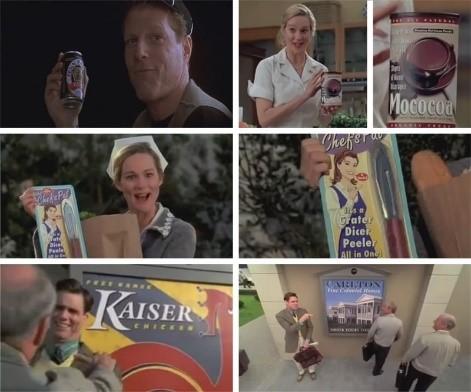
Figure 4 Product placement within the reality TV show
The characteristic of the camouflage product placement in the Truman show is that the consumption and promotion of the products in question are contextualized in the storyline of the film. This blurs the line between advertisement and movie content. Additionally, the pervasive message is naturalized through the content of the movie and the format of entertainment. Even though the movie premiered in 1998, and therefore before the era of social media. it draws parallels to modern advertisement strategies of Influencers on social media platforms. Therefore, the hypothesis arises that product placement in movies is the predecessor of advertisement through Influencers on social media platforms.
Considering the elaborated advantages of branding in movies, it is not a surprise that companies realized the opportunities of social media apps for surreptitious advertising as the platforms emerged in the 21st century. Social media sites became the new platforms for companies to promote their products which can be explained by social media’s high range of global influence. Statistics show that in 2021, 3.78 billion people are social media users worldwide (Gaubys, 2021).
The key tool for companies branding online; Influencers. Following the examples of Santa Clause who promotes Coca-Cola in the 1930s or the Marlboro Man from the 1950s who connects smoking Marlboro cigarettes to a cool ‘macho’ lifestyle (Grin, 2021), modern Influencers advertise products on social media platforms including Instagram, TikTok, YouTube, and Facebook. Central here is the use of subtle advertisements connected to entertainment as already purchased in the movie industry.
Influencer’s marketing strategy
Micro-Influencers, as well as Macro-Influencers, manipulate their audience instrumentalizing para-social relationships for camouflage advertisement enabled by social media affordances.
The researchers Donald Horton and R. Richard Wohl (1956) define para-social relationships as the illusion of a face-to-face relationship between the observer and the performer as a consequence of mass media. Thus, a seemingly intimate bond between a performer and their audience is created. This connection is of a one-sided nature.
Firstly, Influencers show engagement with their viewers. They directly address their audience in a conversational manner and reveal private and personal information about themselves. As shown in Figure 5, Influencers also reveal personal problems on social media. Thus, Influencers build a “bond” of trust and appear authentic. Consequently, the followers get the impression that they know the Influencer and “appreciate his values and motives” (Horton & Wohl, 1956). A social media study has shown that 70% of teenagers believe that Influencers are more relatable than traditional celebrities (O’Neil-Hart & Blumenstein, 1956). This proves that social media enables Influencers to construct a deep para-social relationship.

Figure 5 Personal posts about problems (overthinking, insomnia) on social media to construct authenticity Translation: Why, why am I like this
Through social media’s poll, ‘ask a question', and comment functions, viewers can respond to the Influencer they follow and interact with the persona (Figures 6,7, and 8). Additionally, followers can even join a live video if the Influencer accepts their ‘join request’. Hence, the illusion of a real connection between the audience and the Influencer increases.

Figure 6 Pool function: Post based on interaction Translation: Text me when you are done, okay / tomorrow
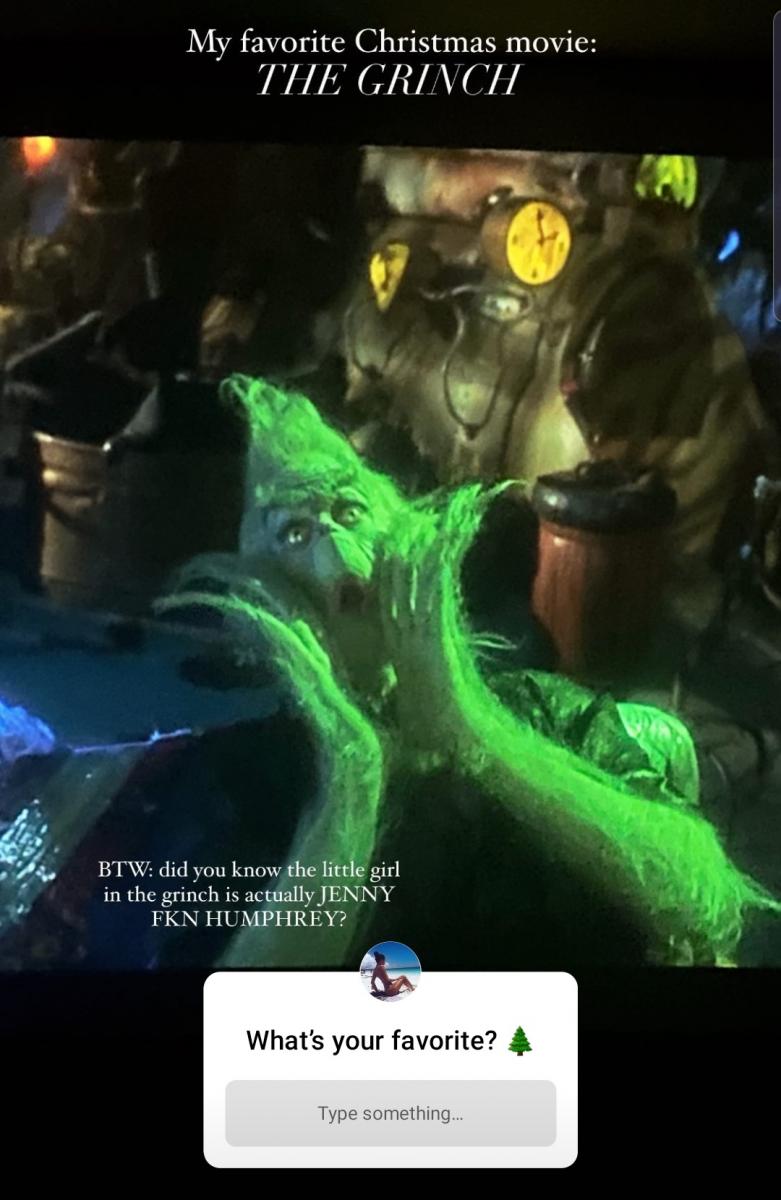
Figure 7 Ask something function: Giving personal insights and asking for a response to increase interaction
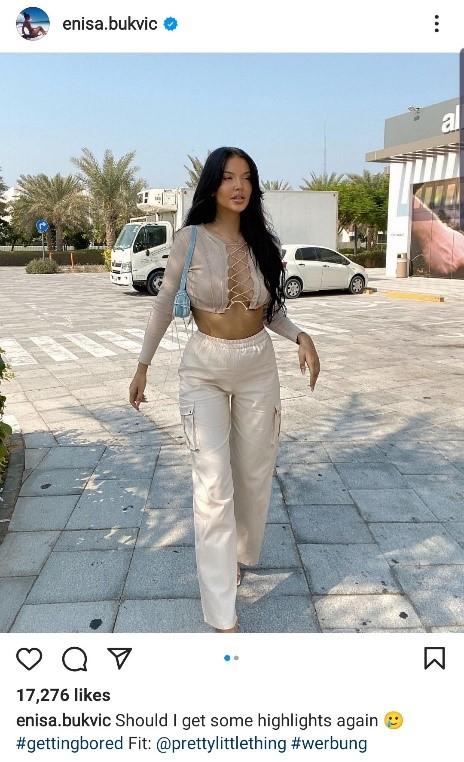
Figure 8 Comment function: Instagram post asking for styling advice
Besides that, Influencers communicate in a manner of small talk for instance by chatting about trivial things or daily routines while duplicating facial expressions and gestures “of an informal face-to-face gathering” (Horton, Wohl, 1956). This creates a sense of connectivity and intends to blur the line that divides the audience from the Influencer. As a result, viewers of the Influencer’s stories get the feeling that the Influencer is one of them; a friend.
Moreover, the Influencer provides a “continuous relationship” (Horton, Wohl, 1956). Uploads of stories and posts are intentionally frequent to stay relevant and benefit from social media’s algorithm. This also allows users to introduce following the content of the Influencers to their daily routine which results in increasing engagement. Once the para-social relationship is constructed through the elaborated strategies, Influencers make use of it to promote products and brands.
In the eyes of their audience, Influencers are authentic and ‘trusted friends’. Therefore, they can frame advertisements as a piece of helpful advice. By emphasizing that their advertisement of the product is 'their personal opinion' because they ‘use the product every day and are happy with it’ they downplay the fact, that they perform scripted and paid advertisements. Through the illusion of a real connection, viewers are more likely to buy a product that their idol ‘suggests’ since they can identify with the persona and have the impression that they know her. Many users see Influencers not only as friends but also as role models and buy products that the online celebrity claims to use with the intention to achieve their lifestyle by owning the same things. The mentality ‘I know what she likes and if she is satisfied with the product I will be as well’ triggers people to buy the promoted products, following the example of their favorite Influencer that portrays himself as a friend figure. Consequently, Influencers instrumentalize para-social relationships for surreptitious advertising which benefits them financially. Para-social relationships with Influencers are easy to have due to the fact that they do not demand anything from their user (Horton, Wohl, 1956). Social media users can decide to stop following an Influencer at any point. Hence, it is the established bond that the audience has with the Influencer that keeps them engaged.
Influencer marketing blurs the line between advertisement and content just like Hollywood branding does
It becomes clear that Influencer advertisements follow in the footprints of Hollywood camouflage branding. The promotion of the products in question is contextualized in the content of the post. Furthermore, the pervasive message is naturalized through the illusion of a bond between the audience and the Influencer as well as the format of entertainment. Therefore, Influencer marketing blurs the line between advertisement and content just like Hollywood branding does. This substantiates the hypothesis that product placement in movies is the predecessor of advertisement through Influencers on social media platforms. Influencers combine entertainment with a subtle advertisement that is not clearly recognized as such by the audience. Thus, users voluntarily and unconsciously watch the branding. This results in both, financial benefits for the Influencer and increasing brand awareness and sales of the promoted product.
The development of advertisement
The development from product placement in movies to social media has shown that the borders of entertainment and advertisement are increasingly blurred. This results in a connection between advertisement and the entertainment industry which can be seen in social media platforms that combine both.
Furthermore, it is to observe that products and brands are promoted in a subtle manner in movies and social media feeds since it benefits the creator and brand. Moreover, para-social relationships play a crucial role in modern advertising since Influencers instrumentalize these for effective product placement. Influencers appear trustworthy and authentic in the eyes of their viewers through their para-social bond. This phenomenon exposes viewers to surreptitious branding that is often misinterpreted as advice by loyal followers. Consequently, Influencers naturalize and disguise advertisements in a similar manner as the predecessor Hollywood.
References
Gaubys, J. (2021). How Many People Use Social Media in 2021 [Updated Jan 2021]. Oberlio.
Horton, D. & Wohl, R. (1956). Mass communication and para-social interaction. Psychiatry, 19, 215- 229
Wikipedia contributors. (2021c, December 11). The Truman Show. Wikipedia.
Williams, Petrosky, Hernandez, & Page Jr. (2011). Product placement effectiveness: revisited and renewed. Journal of Management and Marketing research, 7, 1.